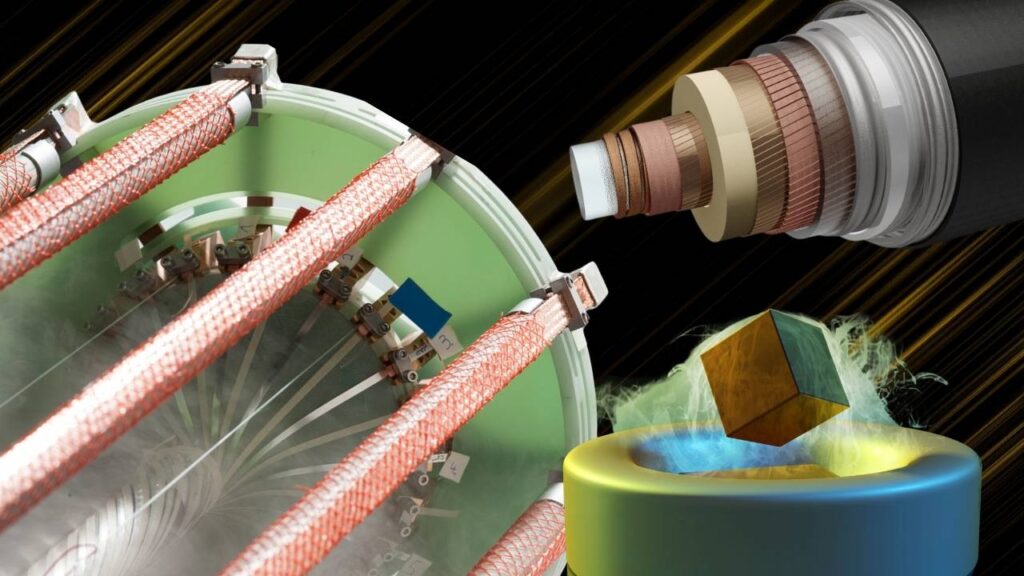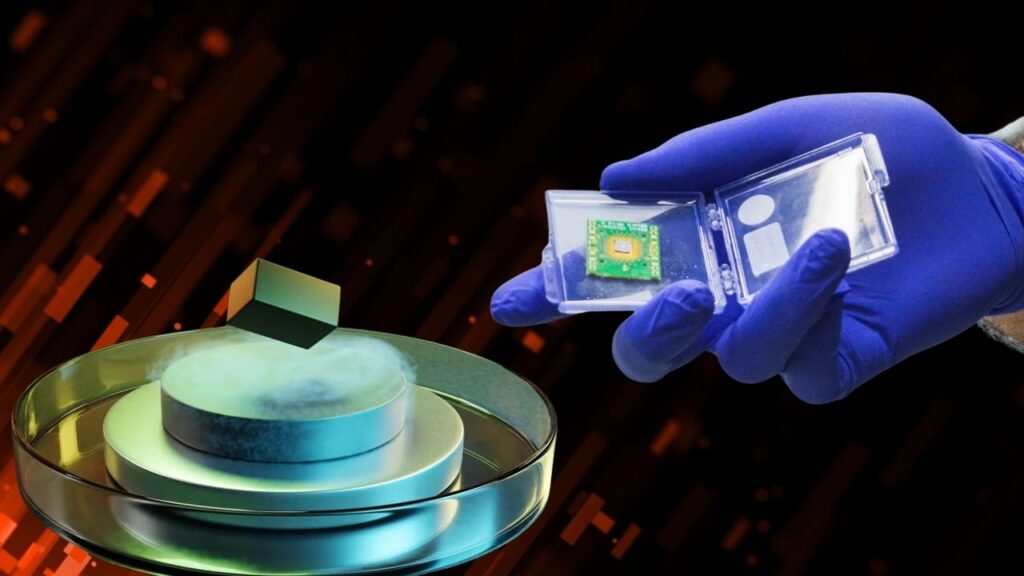Scientists Achieve Room-Temperature Superconductivity: In a landmark scientific breakthrough, scientists have achieved room-temperature superconductivity, a discovery that could revolutionize energy, technology, and transportation. For decades, superconductivity — the ability of materials to conduct electricity with zero resistance — has only been possible at extremely low temperatures or under high pressures. Now, with this leap forward, we’re entering a new age where superconductors could function in everyday environments.

From powering entire cities without energy loss to enabling faster, greener transportation and pushing the boundaries of quantum computing, the implications are both enormous and exciting. This article explores the science behind room-temperature superconductors, the industries poised for transformation, and the challenges that remain.
Table of Contents
Scientists Achieve Room-Temperature Superconductivity
| Topic | Details |
|---|---|
| Breakthrough | Room-temperature superconductivity achieved under practical conditions |
| Temperature | Superconductivity observed near 21°C |
| Material | Modified hydrogen-rich compound doped with lutetium |
| Pressure | Operates at 1 GPa , about 10,000 atmospheres |
| Impact | Could revolutionize energy transmission, computing, medical imaging, and transportation |
| Researchers | University of Rochester |
| Official Source | University of Rochester Press Release |
Room-temperature superconductivity is no longer a fantasy. While we’re still in the early stages of making it usable in the real world, the fact that scientists have achieved this under more practical conditions marks a pivotal moment in science and technology. The potential benefits — from zero-energy-loss power grids to quantum leaps in computing and medicine — could reshape our future.
The journey from lab to everyday use is still ongoing, but make no mistake: this discovery could change everything.
What Is Room-Temperature Superconductivity?
Let’s start with the basics. A superconductor is a special material that can carry electric current without losing energy. Normally, when electricity moves through a wire , some of that energy is lost as heat due to resistance. Superconductors eliminate that resistance entirely.
Until recently, this only worked at extremely cold temperatures, close to **-273°C ** — the temperature of outer space. Such cooling is expensive and limits practical applications.
But in 2023, a team led by Professor Ranga Dias at the University of Rochester announced the discovery of a hydrogen-based compound — nitrogen-doped lutetium hydride — that remains superconducting at room temperature and much lower pressures than ever before. This brings us one step closer to using superconductors in everyday technologies.
How Does It Work?
Here’s a simple way to think about it:
- Normal materials: Electrons bounce around, creating heat .
- Superconductors: Electrons pair up and move smoothly, like dancers gliding across a floor without bumping into each other.
The magic lies in quantum mechanics. In this case, the right mix of hydrogen, lutetium, and nitrogen atoms allows electrons to move with zero resistance at normal temperatures — though the material still requires high pressure to work.
This achievement is not yet perfect, as the pressure required is still too high for most real-world applications. But compared to previous experiments needing millions of atmospheres, it’s a significant leap forward.
Why This Matters: Real-World Impact
Let’s explore what this could mean for our world:
Energy Transmission

- Today: Up to 10% of electricity is lost during transmission from power plants to homes due to resistance .
- With superconductors: Power lines could carry electricity without any loss, dramatically improving grid efficiency.
- Impact: More reliable electricity, reduced carbon emissions, and lower costs.
Transportation

- Maglev trains already use superconductors to float above tracks, allowing speeds of over 370 mph in Japan .
- With room-temperature superconductors, these trains could become cheaper to build and maintain.
- Electric motors and aircraft could also become lighter and more efficient.
Computing & Quantum Tech

- Superconductors are critical for quantum computers, which promise to solve complex problems traditional computers can’t.
- Operating quantum machines at room temperature would remove the need for extreme cooling, making them cheaper and more scalable.
- Data centers could also become faster and more energy-efficient, reducing global electricity consumption.
Medical Devices

- MRI machines and particle accelerators already use superconductors cooled by expensive liquid helium.
- Room-temperature tech could cut operational costs by up to 50% and make these devices more accessible globally.
Practical Advice for Industry Leaders and Investors
If you’re in tech, energy, healthcare, or transportation, it’s time to start watching superconductivity developments closely. Here are three actionable steps:
- Monitor Scientific Publications: Follow journals like Nature, Science, and updates from the University of Rochester for verified replication of these findings.
- Explore Strategic Partnerships: Companies in advanced materials, quantum computing, and green energy can invest in or collaborate with research startups.
- Prepare for Infrastructure Changes: Future-proof operations by considering how superconductors could impact your sector in the next 5–10 years.
What Are the Challenges?
While the discovery is groundbreaking, we’re not out of the lab just yet.
1. Reproducibility
Other labs must independently confirm the results. Past claims in this field have failed when others couldn’t replicate the experiments.
2. Pressure Dependency
The material still requires high pressure. Scientists must find ways to stabilize superconductivity at lower or ambient pressures.
3. Scalability
Even if it works, can we manufacture enough of the material? Producing and shaping it in large quantities for industrial use remains a hurdle.
4. Long-Term Stability
We need to ensure these materials remain superconductive over months or years — not just in short lab experiments.
A Short History of Superconductivity
Here’s a quick timeline to put the current achievement into perspective:
| Year | Milestone |
|---|---|
| 1911 | Superconductivity discovered in mercury at -269°C |
| 1986 | High-temperature superconductors found at -196°C |
| 2020 | Superconductivity at 15°C but at 267 GPa pressure |
| 2023 | Superconductivity near room temp at 1 GPa |
| Future | Goal: Ambient pressure and room-temperature superconductor |
MIT Researchers Develop Transparent Solar Panels for Windows and Mobile Devices
Infrared Innovations: Why Invisible Light Could Be Tech’s Next Big Frontier
Advancements in 3D Printing: How New Materials Are Expanding Possibilities
FAQs About Scientists Achieve Room-Temperature Superconductivity
What is room-temperature superconductivity?
It’s when a material conducts electricity with zero resistance at a temperature close to what we live in — around 20–25°C .
Why does this matter?
It could eliminate electricity loss, improve tech efficiency, and revolutionize industries like energy, transportation, and medicine.
Is this technology available now?
Not yet. The material works only under high pressure and still needs replication and scaling before commercial use.
Who discovered this?
A research team led by Ranga Dias at the University of Rochester in 2023.
What’s next for this discovery?
More labs will test and try to reproduce the results. If successful, scientists will work on lowering the pressure requirements and scaling production.



















